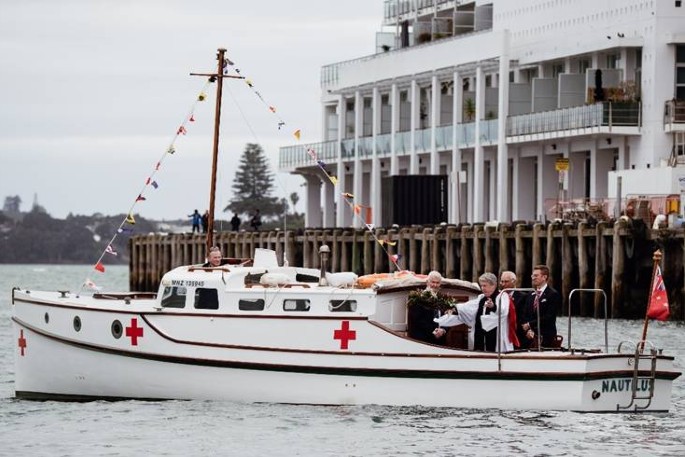This Content Is Only For Subscribers
This September marks 15 years since Merchant Navy Day was officially recognised in Aotearoa New Zealand, a milestone that honours the often-overlooked legacy of the men and women who served in the Merchant Navy during wartime.
On Wednesday, September 3, the New Zealand Maritime Museum Hui Te Ananui a Tangaroa will host its annual Merchant Navy Day commemoration service. The free, one-hour service begins at 11am and includes a wreath-laying ceremony at the Museum’s Merchant Navy Memorial Plaque.
Merchant Navy Day was first formally observed in New Zealand in 2010, when the Government announced it would join Britain and other Commonwealth nations in recognising the critical role of the Merchant Navy during conflict. The date chosen was September 3, which marks the sinking of the first British merchant vessel SS Athenia, in 1939 just hours after the declaration of World War II, signalling the beginning of civilian involvement in the war.
This year we are honoured to welcome as guest speaker Neill Atkinson, chief historian at Manatū Taonga Ministry for Culture and Heritage, and editor of Hell or High Water: New Zealand Merchant Seafarers Remember the War, a collection of first-hand wartime accounts.
“New Zealanders have always relied on ships and the sea to connect us to the wider world, and this was never more vital than during the world wars of the 20th century,” Neill says.
“On Merchant Navy Day we remember the service and sacrifice of civilian merchant seafarers, who maintained essential shipping links despite the dangers.”
During the world wars, merchant ships were crewed by men and women of diverse ages and nationalities, from teenagers to seasoned veterans, united in keeping supply lines open. In World War II alone, more than 160 New Zealand merchant seafarers lost their lives, with many more captured or injured. The dangers were not confined to combat. In 1945, New Zealand vessels including Maunganui and Monowai undertook humanitarian missions to repatriate prisoners of war and civilian internees from Europe and Asia.
“Marking 15 years of this day gives us a chance to reflect not only on the sacrifices of the past, but also on the importance of merchant shipping today. With the overwhelming majority of New Zealand’s trade still carried by sea, the Merchant Navy remains crucial to our economy and daily life,” says Vincent Lipanovich, Tātaki Auckland Unlimited director of the New Zealand Maritime Museum.
As part of the commemoration, the museum will also present a special display about Pamir, a working cargo ship used by New Zealand during World War II due to global shipping shortages. Between 1941 and 1948, Pamir operated as a training vessel for New Zealand youth, many of whom went on to serve in the Merchant Navy. These young seafarers gained skills, resilience, and an understanding of life at sea. In 1957, Pamir tragically sank in a storm with the loss of 80 lives, a reminder of the dangers merchant mariners have always faced, even in peacetime.
The New Zealand Maritime Museum invites members of the public to attend this important day of remembrances as we mark 15 years of official recognition of Merchant Navy Day. The day offers a moment to honour the past, and to reflect on how we continue to remember and support those who keep Aotearoa connected by sea.
The Museum Merchant Navy Day Commemoration Programme
- When: Wednesday, September 3 | Doors open at 10.45am | Services begins at 11am and runs until 12pm
- Where: New Zealand Maritime Museum, corner of Quay and Hobson Streets, Viaduct Harbour
- Registration: This ceremony is free, but registration is encouraged prior to attendance.
- To RSVP to the commemoration service, visit the museum’s website: https://www.maritimemuseum.co.nz/events/merchant-navy-day-2025
- Pamir pop-up display details: On display in the museum’s plaza from September 3 – October 5.



